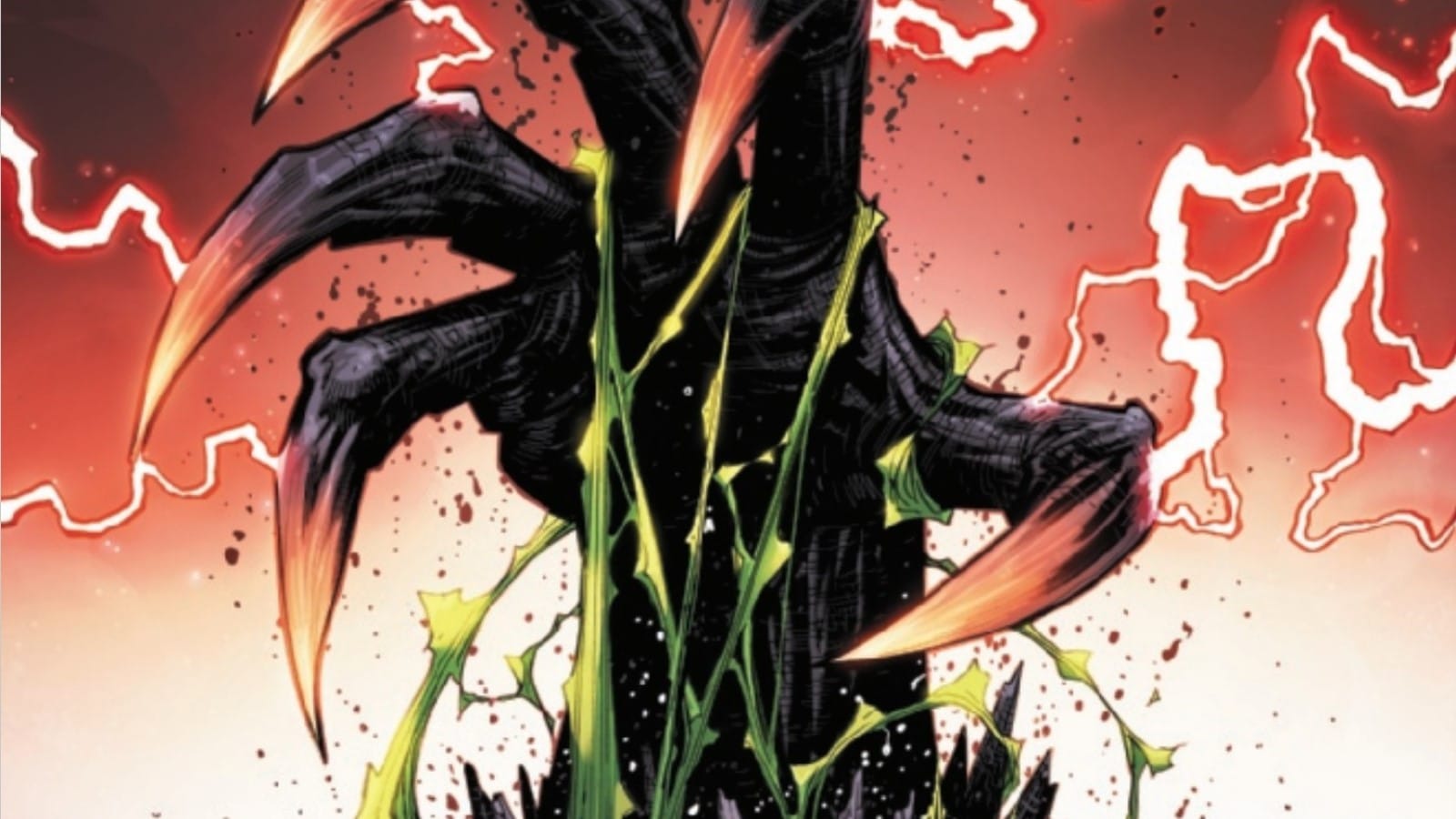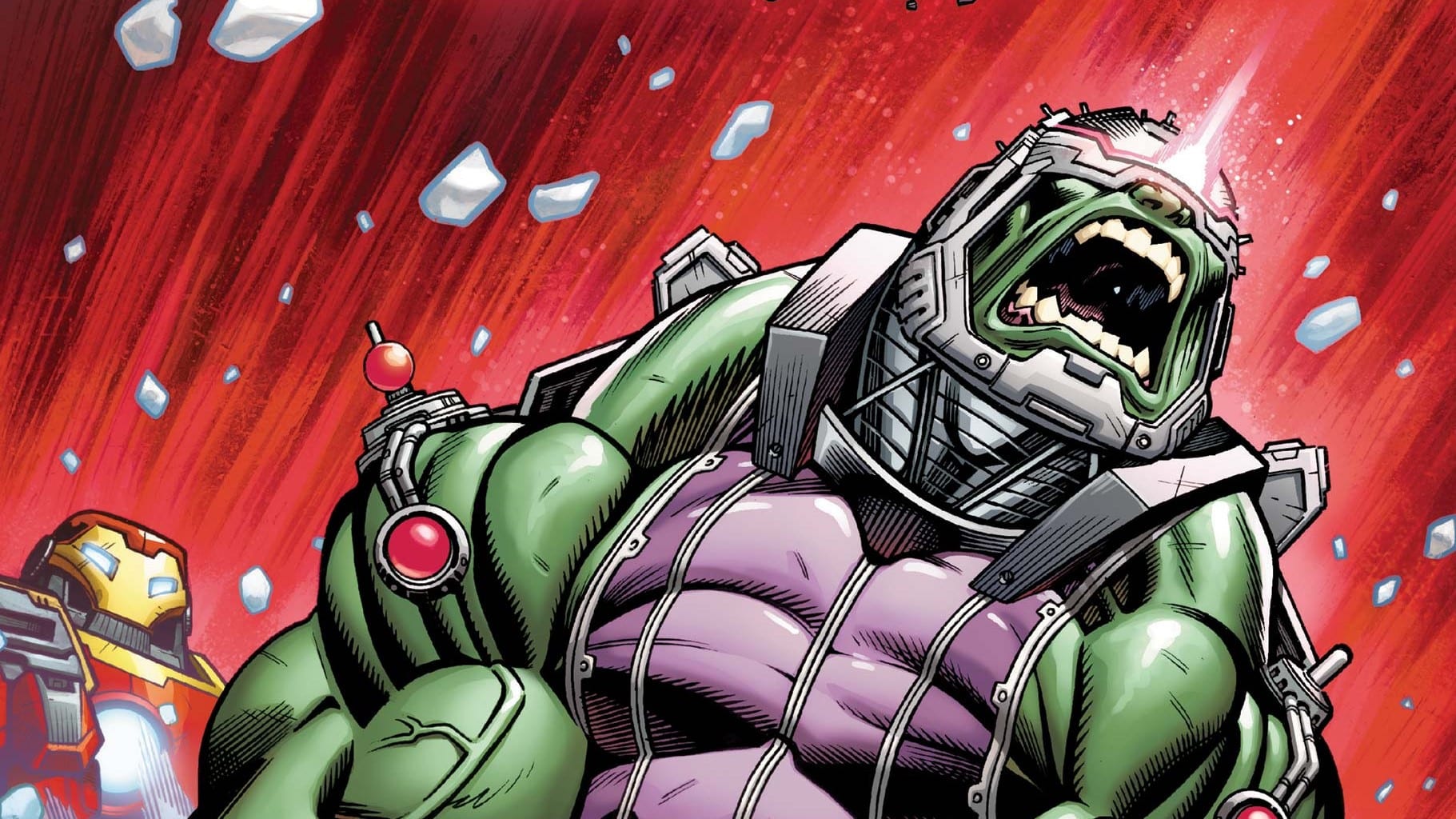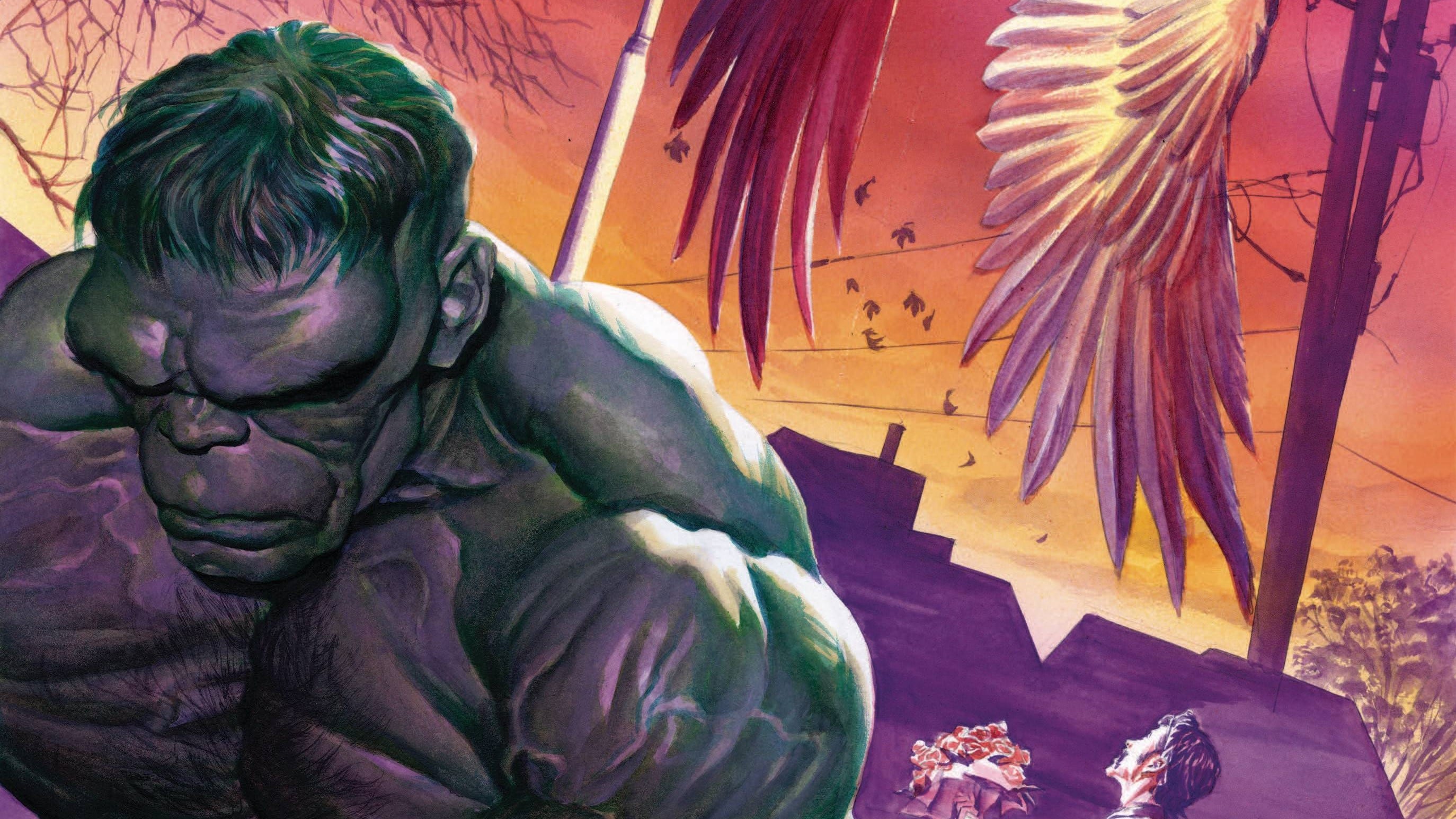The first arc of Donny Cates and Ryan Ottley’s Hulk reaches its climax as Bruce Banner’s control over Starship Hulk slips … and something much worse takes the wheel in Hulk #6, written by Cates, drawn by Ottley, inked by Cliff Rathburn, colored by Frank Martin and lettered by Cory Petit.
When I wrote on the first issue of this volume, I decided that I would return to discuss it again either when the first arc concluded or when I had a better sense of what the series was up to. That discussion focused on a negative response I had to the book: I didn’t find the premise compelling specifically as a follow-up to the previous series. Ultimately, my point was that in serialized shared universe stories, sometimes it’s the context of the story rather than the quality of the creative team or even the quality of the story itself in isolation that can determine our enjoyment of it.
Of course, in a serial, that context is ever-changing. So: What can we make of Hulk now that we have some distance from the previous volume, and now that it’s begun to pivot into its second arc? I don’t think the picture is entirely clear yet, but I have some thoughts.
It seemed throughout most of that arc like this volume was going to be a multiversal action story, but now I’m not so sure. Even if the book is going to continue to universe-hop, that’s begun to feel like a backdrop to what the book is most interested in. On some level, the other universe in this arc exists to give the Starship Hulk cool things to punch, but the narrative focus is never on that action, but rather the fight scenes set in the Hulk’s own head. The universe conceived of here seemed useful as a device to provide, as multiverse stories often do, mashups of other characters (Here’s Spider-Hulk!), but I think this story is a lot less Spider-Geddon and a lot more Mirror, Mirror. The point is to provide a Banner that is radically opposed to ours in several ways. First of all, he’s not just not the Hulk, he’s not the Hulk in a world of Hulks. That allows for the second, more important difference: His problems are entirely externalized. It gives our Banner an entire world of Hulks and presents this as, essentially, no big deal. The only threat to him is, highlighted by the contrast, inside his own head: In this issue we briefly glimpse what has, in the marketing for this series, been positioned as the Big Bad of the Run, the Titan, the Hulk’s Hulk. More on that concept in a moment; for now I want to talk about what (briefly) unleashes the Titan: Bruce Banner’s fantasy girlfriend/ mom.

For the first five issues, an imaginary Betty Ross hung out on the Hulk Bridge, but last issue she called Banner “son,” got a bit lizardy around the eyes and sent everything to hell. It’s a teeny bit Freud and a lot Frankenstein, this imagined girlfriend/mom/monster, and it’s the detail that, I think, finally places this series in better dialogue with its predecessor. Immortal Hulk is, to speak reductively, about dads: The bad dad Bruce remembers, the good dad he made up, the big ol’ dad in the sky and the one down below. That’s the emotional throughline that anchors all the theology, philosophy, ethics and superheroics of the run. It’s a story about a guy who has complicated feelings about dads.
So here there’s an opportunity to dialogue with all that; not ignore it, not repeat it, but riff on it from a slightly different angle, and one that (in my limited reading; I’m most familiar with the past decade of Hulk comics, and then the big Hulk events before that) I think isn’t previously that well explored: Bruce’s relationship with his mom. To be clear, I’m not expecting (nor asking for) any kind of super deep, serious character exploration here in future issues; this is shaping up to be a fairly psychological book, but in the sense that it’s an action book largely set in the main character’s own skull. I’m expecting more Inception than I’m Thinking of Ending Things or Jacob’s Ladder, and that’s fine. What excites me, what I think the previous issue and this one promise, is that things are going to get weird. Bruce’s mind dreams up a mom that’s an evil lizardy demon lady who impersonates his girlfriend in the hopes of unleashing a really big Hulk on the world? Alternatively, some kind of lizardy demon lady enters Bruce Banner’s soul while impersonating his mom impersonating his girlfriend, again, to set loose a Hulk that is really big, like a really big Hulk? Either way, it’s weird, and it allows for the narrative to get weirder. More importantly, through the character, Ottley has begun to introduce something unsettling and truly grotesque into the visual vocabulary of the comic. I previously thought that the new very clean, very shiny Starship Hulk design was a missed opportunity, but maybe that cleaner exterior serves a nice contrast with her grotesque presence in the interior. I think there will be, too, ample opportunities for the visual tone to shift into something a bit more horrifying as the comic returns to the Big Bad.

Which brings us back to the Titan, the Hulk’s Hulk. Now, there are a few objections to this idea. First of all, philosophical: if the Hulk is the Shadow Self, what is a Shadow Self of a Shadow Self? Wouldn’t that be — the Self? Do shadows cancel out like negative numbers? Or — wouldn’t the shadow of a shadow just be, well, that same shadow? Second of all, canonical: Isn’t the Hulk’s Hulk Kluh, the Hulk that comes out when the Hulk gets sad (after wizards have cast an inversion spell to stop a big Nazi man from using a brain he graverobbed to do evil)?
But sed contra, I say to you:
The Hulk (or the various Hulk personas) are effectively characters in their own right. They no longer just function in the story as shadows, but as distinct people. Why not give the Hulk a Hulk?
And in reply to the second objection:
Just as frustrated as I was that the comic didn’t seem to want to springboard off of the previous volume, I am extremely happy for the comic to ignore the worst idea from the worst story in the worst Avengers title since 2004, Uncanny Avengers, most memorable today for the author recommending critics of a “colorblindness will solve racism” speech “drown in hobo piss.”
We read these comics because of their context. We love them because they are longstanding serialized narratives. And sometimes, sometimes, we would prefer some pieces of context to just be forever ignored.
So. I think this comic is going to get more psychological, get more weird, play a little bit more with horror and the grotesque, ignore some bad stories and (indirectly) riff on good ones. All this is promising. But most importantly:

I know this is going to be a comic where a really bad Hulk shows up sometimes, but one that’s also a really big Hulk And I know he looks like he’s got cities or spires or towers growing all over him. This choice and this design tap into the same part of my brain that cheers when Matt Murdock’s alter-ego/twin brother gets magicked into existence, or Nanny and Orphan Maker go on a rampage, or Omega Red wargs into Moby Dick, or Overdrive does anything, or a comic dares to ask, “The Fist of Khonshu? But don’t people normally have two fists?” The thing about this book — the thing about serialized superhero books — is I can talk about my hopes and expectations, my disappointments and excitements, I can talk about old Hulk stories, continuity, thematic throughlines and the state of the Marvel Universe across its many titles. I can talk about these and other things, other angles, other contexts, but sometimes none of that matters. If a book can tap into the goofy fun unique to Marvel comics, sometimes that’s enough.
Final Thoughts
- Goofy DC Fun and Goofy Marvel Fun are distinct, though they do overlap
Robert Secundus is an amateur-angelologist-for-hire.






